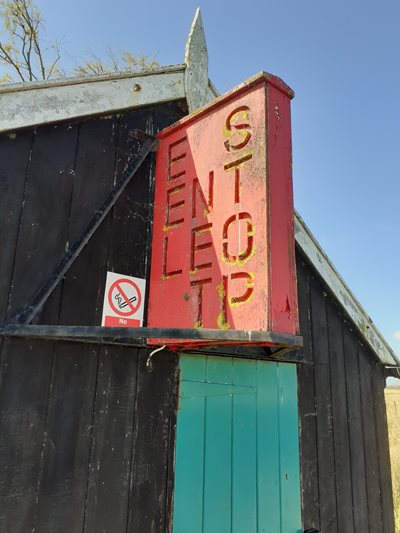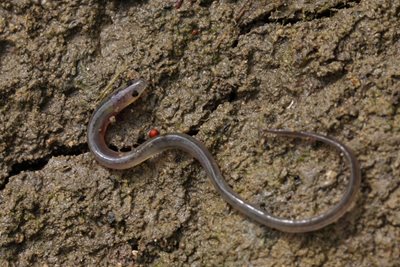The ‘common’ European eel, so much a part of the fens and broads of Norfolk, is in rapid and catastrophic decline says Norfolk Wildlife Trust Reserves Officer Robert Morgan.
Eels are incredible fish both culturally and biologically, and they have fascinated people since the earliest times. Aristotle seemed to contemplate them a great deal, believing they grew from a strange slimy substance in mud. Over the next 2,000 years the ‘how and where?’ of their habits was the subject of speculation, much of which was pure fantasy, one belief being they grew from horsehair.
Even in the scientific era of the late 19th and early 20th century they remained a mystery; primarily because they spend most of their life without genitalia, only producing reproductive organs just before they need them. It wasn’t until 1925 that a Danish zoologist, Johannes Schmidt, linked the European Eel Anguilla anguilla with an incredible breeding migration to and from the Sargasso Sea in the far Western Atlantic. The Sargasso Sea is a strange place, not only is it wide (of course) but warm, deep, and surprisingly calm. Although, despite many searches, not a single adult eel or even an egg has ever been found there.

An eel hut, Candle Dyke, Hickling (c) Robert Morgan
When I think of eels my mind immediately turns to jellied eels, for a plate of pie, mash and liquor is incomplete without a tub of jellied eels next to it. The eel has always been popular fare, chiefly because it was common and exceptionally cheap. Records show that in the 14th century the Broads and Fenlands of Norfolk supplied huge quantities of eels – they were even used as currency. The ‘sticks of eel’ were stored live in huge wooden barrels to be transported to Norwich, and even further afield. The Doomsday Book records, that in one year alone, the River Ouse supplied 52,000 eels.
Winding the centuries forward, the drainage of our vast wetlands, increasing environmental degradation, and more latterly pollution of our rivers, saw the decline of much of our freshwater wildlife. Eels, although reduced in number, were still incredibly common. Even in the 1950s when the water quality of the Thames was little better than a chemical toilet, and officially declared biologically dead, eels remained.
In less than thirty years there has been a massive and catastrophic crash in eel numbers across its whole European range, and it is feared that within twenty years it could be close to extinction. We have become almost numb to these depressing downward trends, but it feels like an understatement to say that the extinction of the European eel is an unthinkable environmental disaster.
Country folk have witnessed and acknowledged the disappearance of eels for many decades. At my workplace, Norfolk Wildlife Trust’s Hickling Broad reserve, there still stands an eel-catcher's hut alongside the Candle Dyke. This narrow channel links the broad with the Thurne River. In erstwhile times, on a wet and moonless autumn night, the eel-catcher would use his instinct and experience to judge when to lift and tighten his eel-net across the dyke. This was timed to maximise the catch, by predicting when most eels would commence their breeding migration. A sign, illuminated by an oil lamp (probably candles originally) would warn boaters that the net had been set. This very effective trap caught the fully-grown eels as they departed for their incredible journey back to the Sargasso Sea. Most of the eels would have been living in the broad for years, a few for a couple of decades. At some point individuals were prompted to migrate by an unknown and mysterious influence. For some of Hickling’s eels this journey was cut short at its very beginning. Despite asking, I haven’t yet found anyone who knows when the eel hut stopped being in active use.

European glass eel (c) RSWT
I met an eel-trapper in 2012 on Malthouse Broad. He was, not unexpectedly, a weathered man with a rather tatty grey beard. He sat in a small boat tethered to the bank, half-a-dozen baited eel-baskets were neatly stacked at the front of the boat, all skilfully woven from osier whips. A plastic bucket contained two eels. They were sliding around each other, twisting and turning themselves into a slimy knot. I now know I’d met the last eel-catcher in the Norfolk Broads and “well past making any living”.
So where have all the eels gone? The answer probably lies in their complex breeding and migration habits. When eels hatch, far out in the unfathomably deep Sargasso Sea, they are minute, and at this stage they are pale willow-leaf shaped larvae, called leptocephali. Over a period of several years, they drift across to Europe on the Gulf Stream. When they arrive at the continental shelf, generally in early spring, they change shape, becoming more cylindrical. Now known as glass eels, the tide washes them into the mouths of our rivers. Working their way upstream they grow to about four inches long, gaining colour they become elver. If the ground is damp, they will travel overland finding pools and dykes far from the river. When they have reached somewhere they are happy, they stay, feeding and growing for perhaps seven years if they decide to become a male, and twelve if they choose female. Some live undisturbed in a forgotten backwater for an incredible forty years. Then, out of the blue, they get the call. Now a mottled greenish black on top and silver underneath, they head downstream on the flood, and swim 5,000 miles back to the Sargasso Sea, never feeding, but absorbing their own organs and bones as they go. At their final destination they spawn and then die.
Fortunately, several research projects are currently being undertaken. One suggestion is that the concoction of residue chemicals in our rivers, from medication to pesticides, is preventing eels from sexually maturing, or just weakening them too much to complete the migration. Other theories propose the Gulf Stream has subtly changed due to a warming ocean; a bacterial disease is affecting eels’ swim-bladder; or that there is some yet unknown issue in the spawning grounds.
Efforts, particularly in Northern Europe, are being made to ensure the eels’ journey up-stream is unhindered. Man-made obstacles, such as dams and weirs, have been an issue in the past, but many are now fitted with elver ramps. But despite this, in our wetlands and rivers, adult eels are now all but gone. The European eel is, or has been, a major part of the food chain throughout all stages of its life cycle. At a push, my Cockney brethren and I will be able to do without jellied eels, but the consequences of the predicted extinction of this once abundant fish is of very grave concern for our wetland eco-systems, and the repercussions yet unknown.
Header image - common european eel by J Hatcher